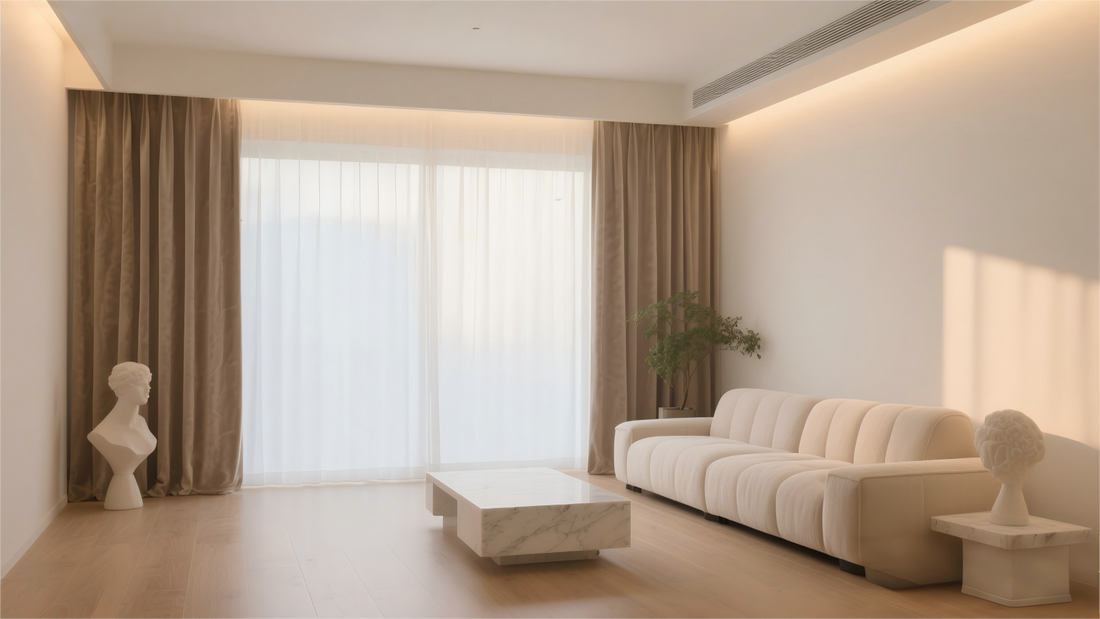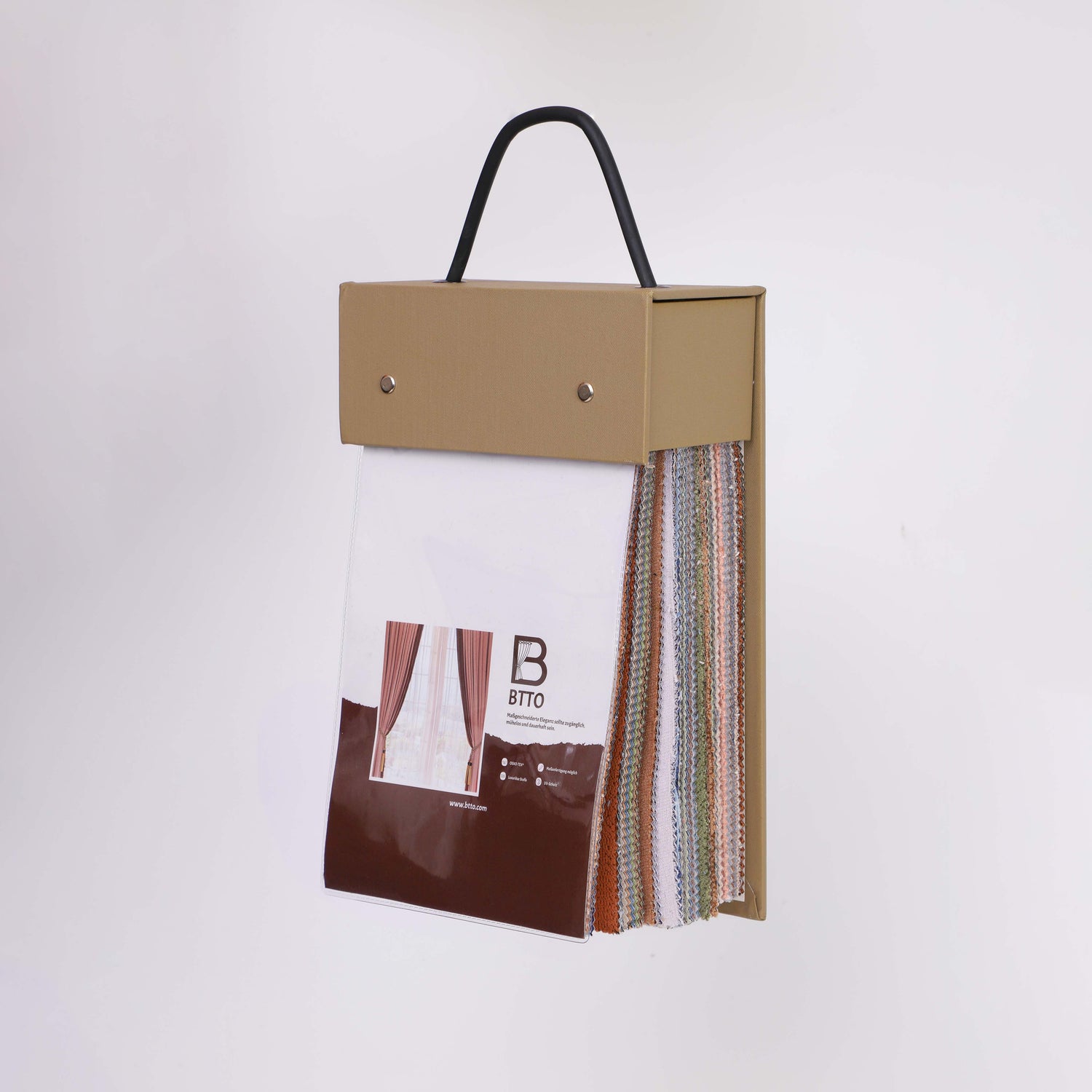
Curtains and saving energy: tips for a warm winter
When it's freezing outside, it's not just the heating that determines comfort – the right curtains do too. Dense fabrics, clever installation, and a multi-layered combination noticeably retain heat in the room, reduce drafts, and help lower heating costs.
Why curtains help save energy
Windows are thermally vulnerable in winter: Heat escapes through the glass, cold air flows in around the edges, and the temperature difference creates drafts. Curtains add an additional layer of insulation and airflow.
- Density & Weight: Heavy, tightly woven fabrics with a high g/m² value slow down heat loss.
- Air cushion: A silent air space is created between the fabric and the window, which insulates.
- Surface effect: Voluminous materials (e.g. velvet) bind air and reduce convection.
Remember: The denser the fabric and the larger the covered area (top, sides, bottom), the better the effect.
The right choice of fabric: warm, dense, functional
Recommended winter qualities
- Velvet / Velour : High density, elegant drape, very good heat retention.
- Thermal & blackout fabrics : Multi-layer constructions with coatings or lining.
- Molton/flannel lining : Brushed, voluminous backing increases the insulating effect.

Important criteria
- Surface weight (g/m²): The higher, the better the insulation.
- Fabric density: Tightly woven fabrics retain air movement.
- Light control: Bedroom: Blackout; Living room: Dim-out or Thermo for softer light.
Layering: think in layers – save all year round
- Outer layer (tight & warm): Heavy thermal or velvet curtains keep out the cold. Tip: Thermal curtains.
- Inner layer (light & light-diffusing): A fine voile or inbetween provides brightness and privacy during the day.
Extra tip: A separate thermal lining (button-on/glued-in layer) increases winter performance and can be removed in spring.
Assembly that really seals
- Ceiling height: Rail or rod as close to the ceiling as possible – less gap, less heat loss.
- Extra wide: extend 15–25 cm beyond the window opening on each side, reducing lateral drafts.
- Ground contact: Let the curtain rest 2–3 cm on the ground (“break”); this slows down cold air on the ground.
- Shaped/U-shaped rails: In niches, they bring the curtain closer to the wall and window.
- Side sealing: Sealing profiles, frame strips or magnetic/velcro solutions minimize edge gaps.
- Upper panel (pelmets): Reduces the chimney effect upwards.

Measurement & folds: how the curtain fits optimally
- Width: window width + at least 30-50 cm of fabric.
- Height: Measure from ceiling to floor; allow 2–3 cm for overlying space.
- Fold allowance: 2.0–2.5 times for volume and better insulation.
- Hanging: eyelets, curtain tape, pleated tape or concealed gliders – the main thing is that they are tight and have few gaps.
Fast low-budget measures
- Thermal liner: Hang additional lining layer behind existing curtains.
- Draught excluder: Fabric roll on door thresholds blocks cold drafts.
- Velcro/magnetic strips: Fix the fabric edges to the side of the wall.
- Window seals: Replace old rubber seals, close gaps.
Care & winter routine
- Daily use: Open during the day (use the sun), close at dusk (keep warm).
- Choose easy-care: Machine-washable, crease-resistant qualities retain volume and drape.
- Keep fresh: Shake and air regularly, reduce dust.
- Gentle cleaning: Low temperatures, suitable program, gentle ironing.
Room examples: stylish implementation
Living room
Velvet in natural or stone tones, ceiling-high, extra-wide, with a light in-between effect. Warm lighting, wood, wool carpet – comfort plus efficiency.
bedroom
Blackout thermal fabric in a calm color tone, maximum edge overhang and tight bottom finish for restful sleep.

Home office
Dim-out or dense twill in muted colors; side fastening to prevent drafts and allow for concentrated work.
Checklist: Your winter curtain project
- Tightly woven, heavy fabric (e.g. velvet, thermal, blackout)
- Layering: dense outer layer + light inner layer
- Ceiling-high installation, extra wide, floor break
- Minimize side & top column (panel, bars)
- Fold allowance 2.0–2.5 times
- Easy-care & machine washable
- Winter routine: Use the sun, close windows in the evening
Would you like to test the material and color at home? Order fabric samples and receive personalized advice – custom-made upon request.
Velvet curtains · Thermal & blackout · Voile & sheer curtains

